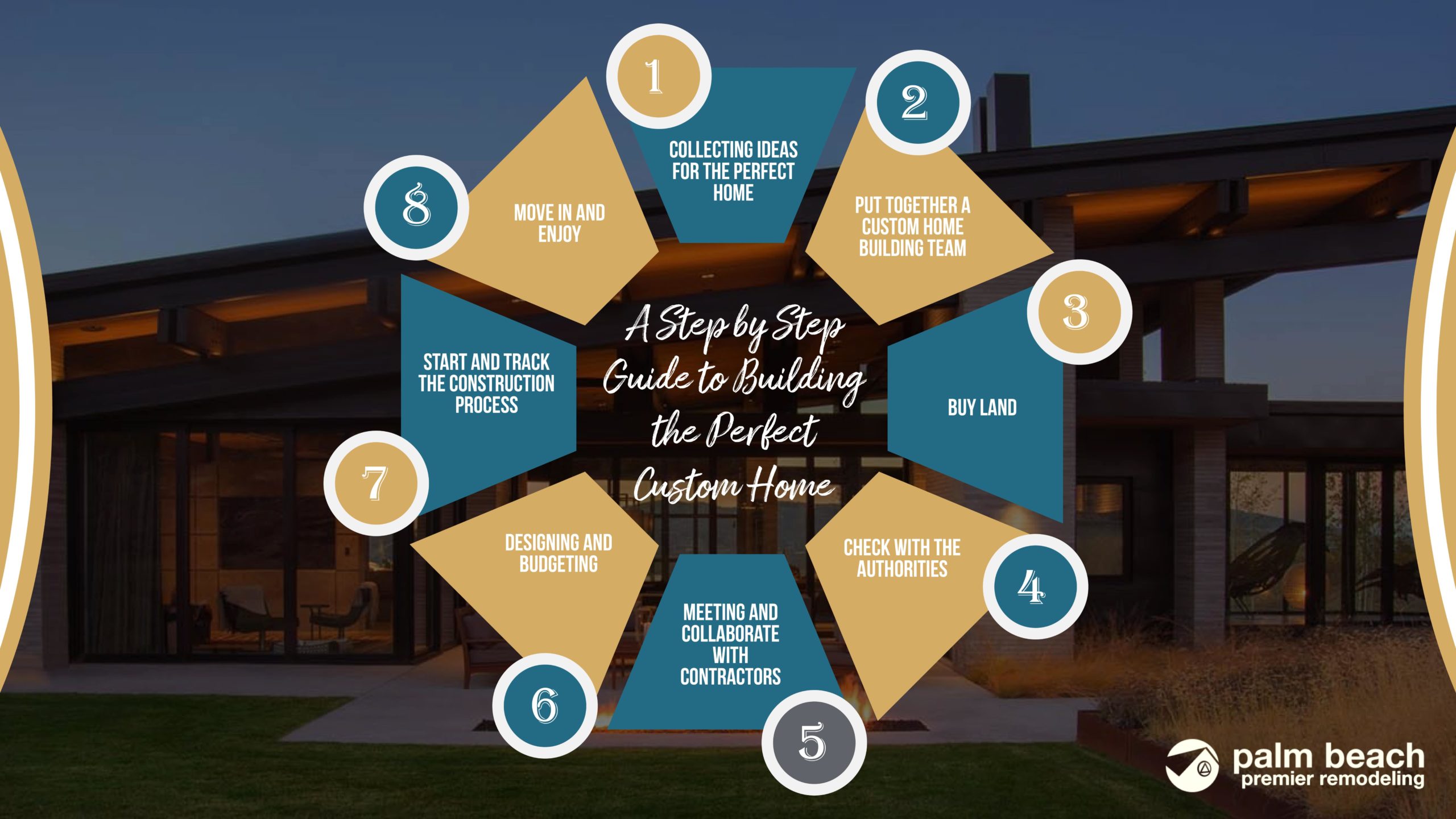Unlike building a custom home that requires more effort, time, and money, to build a production home is easy and less involving. You just need a good contractor, choose one of their models, let them build the house, and move in. Sadly, production homes don’t always meet the desires of the homeowner. That’s why you would choose to labor on building a custom home. That way, you get a personalized home that checks all the boxes when it comes to quality and value.
Custom building a home is hard, but it doesn’t have to be an impossible mission. Here is a step by step guide to help you build the perfect custom home without stress.
Go From Demo To Cooking in Two Weeks!
Step 1: Collecting Ideas for the Perfect Home
A perfect custom home is a mix of a lot of things. And all these elements don’t come out of thin air. Long before the construction, you need to collect ideas, compare design elements, and assemble your preferences. That means visiting homes, talking to industry experts, and putting together a list of features that make a perfect home. Don’t forget to get input from friends and family.
You may have already thought about building a custom home. But don’t assume you have every idea figured out in your mind. Create a checklist that will inform the where and how you’ll build your home. You want to keep an eye on architectural elements, design details, and the functionality of the rooms. To get everything right on this point, factor in your lifestyle to get a home satisfies your desires.
Step 2: Put Together a Custom Home Building Team
Building a custom home requires help from professionals. You want an architect to draw your home sighting every element highlighted in your checklist. An interior designer will help you organize everything in place. The custom home builders will ensure your house stands according to what the architecture has drawn. If you get the write people for the job, they’ll hook you up with other industry players they know. Chances are that your main contractor will subcontract to get plumbers, electricians, suppliers, and the rest without you needing to invest your time in interviewing hundreds of companies and individuals.
Ask your friends and family who have build homes recently to link you up with various contractors. When you get in touch with the prospective contractors, ask for references, and dig deeper into their previous performance. You want to settle on companies that deliver on their promises, meet deadlines, manage projects effectively, yet fall within your budget. Ask questions without the fear of being obvious. Don’t miss out on these points:
- Let them show you images of their past projects
- Ask to meet the contact person that will be handling your project
- Know about the subcontractors and the qualifications they hold to build your home
- Ask about where the contractors source their supplies and how they are going to get them on the construction site
- Understand the payment terms for their services to avoid unnecessary frictions
Step 3: Buy Land
The next step is to find a location and buy a piece of land where your custom home will sit. There are several factors to consider to choose a prime location for your home. Look into how suitable it is to build in that land, the availability of utilities, and views. If your budget is tight, you’d want to avoid places that will require a lot of excavation before you can build. Don’t overlook any details, including the weather of that place.

Step 4: Check With the Authorities
You will build your home on land that has laws and regulations. You don’t want the project to be stopped along the way, or be fined for not following the guidelines set by the local government. Let the regulators inspect your property, acquire the appropriate permits, and pay for local fees and taxes. Depending on the scope of your project and the place you choose to build, getting the approvals can take a few days to several months. So, you should know the probable timeframe of getting the permits to avoid frustrations and plan your processes better.
Some contractors are well versed in the government approval processes and can advise you to get the permits fast. Also, seek information about the government approvals from friends and family who have built their homes recently.
Step 5: Meeting and Collaborate With Contractors
Your contractors will have questions for you to answer and give you professional advice for the success of your home. A contractor will want to know what your needs, wants, and wishes are to classify their operations according to what you desire. You might fill a questionnaire in some situations and sit in several meetings to make sure you are understood. Remember to discuss your availability so that everyone knows when you’ll be around.
Step 6: Designing and Budgeting
Your contractors will help you break down your resources and show you what they intend to do. At this step is where you’ll analyze the site, develop a budget, and come up with a schedule. When you meet your architect, ensure they know your budget to design a home that fits into it.
Depending on how much you plan to spend and the intricacies you seek, you’ll have to make decisions on between 30 to 50 items. Our experts at Palm Beach Premier Remodeling would advise you to give your full attention to this phase because it lays the foundation necessary for the construction to be successful.
Step 7: Start and Track the Construction Process
With a great design from the architect, the construction phase shouldn’t be a problem. Depending on the size of your custom home, the construction process could take between 6 to 18 months to complete. What you want to do is be available when needed for decision making to avoid any delays.
Go From Demo To Cooking in Two Weeks!
Step 8: Move in and Enjoy
Once your custom home is complete, what is left is for you to move in and enjoy the work of your hands. Start with cleaning up the place. Often, contractors clean after themselves so, ensure its somewhere in your agreements. The next step involves landscaping so that the outside of the house looks as good as the inside.
Your home is ready! If you’ve been living in a rented place, you shouldn’t pay rent for another month. Find movers and pack your belongings to move into your brand new home. Hang the decor, arrange the furniture, and show everyone their room. Want to host a housewarming party? Go ahead and invite your friends and new neighbors and enjoy your new home!

